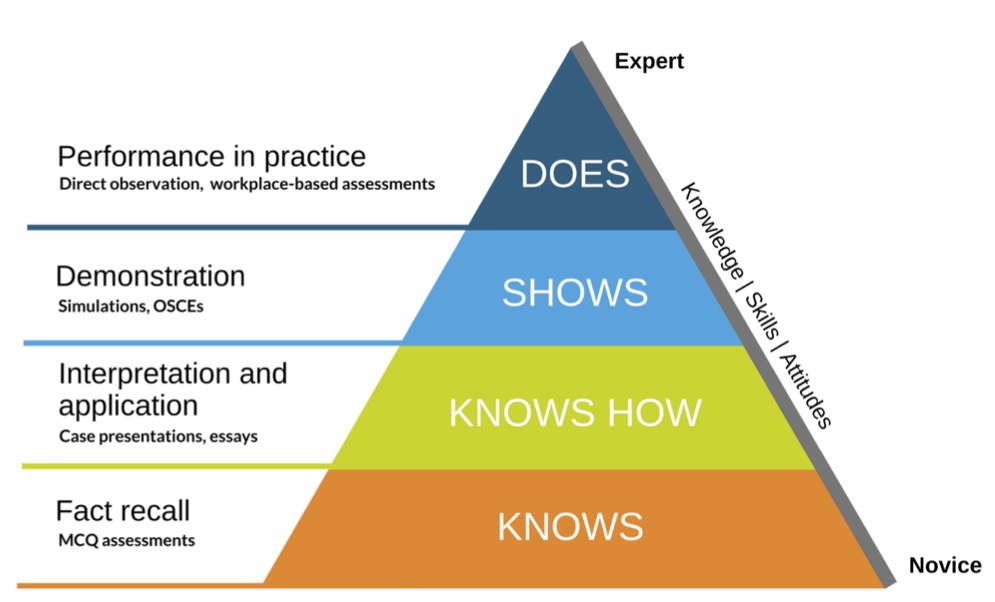1 Miller’s Pyramid of Clinical Competence
Miller’s pyramid of clinical competence was developed specifically for assessing students in health care settings. It is useful for aligning learning outcomes (or clinical competencies) with what learners should be able to do at any stage of the learning process.
The figure below, adapted from Ramani and Leinster (2008), illustrates the expected student progression from novice (bottom) to expert (top). Novice learners should be able to recall facts, but as their understanding increases, they should be able to interpret and apply, demonstrate, and perform required knowledge, skills, and attitudes in authentic practice settings. Assessments should also evolve from traditional tests to more authentic assessments.
Miller’s pyramid is frequently used with Bloom’s revised taxonomy, core competencies, and entrustable professional activities (EPAs).
Additional resources
- Norcini, J. (2003). Work-based assessment. British Medical Journal, 326(7392), 753-755. doi: 10.1136/bmj.326.7392.753
- Norcini J & Burch V. (2008). Workplace-based assessment as an educational tool. AMEE Guide 31. doi: 10.1080/01421590701775453


